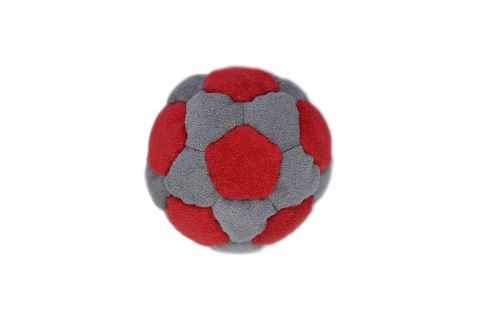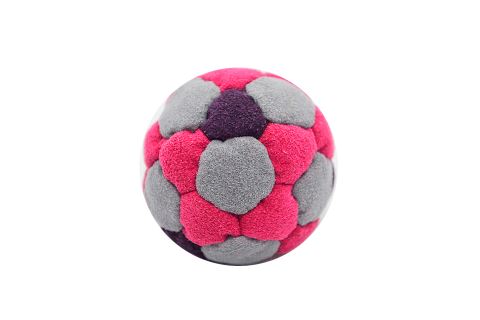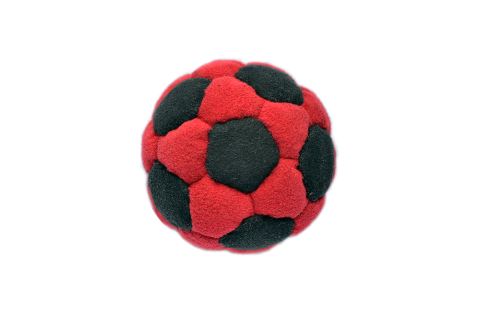Footbag - do it yourself

What tools are needed to make footbag? First
these are good scissors. It is highly desirable to have scissors for cutting fabric. They are very sharp and
cut fabric perfectly. A needle, in general, almost any will do. In addition you will need: a knife for
paper, awl, suitable mandrel for tightening knots.
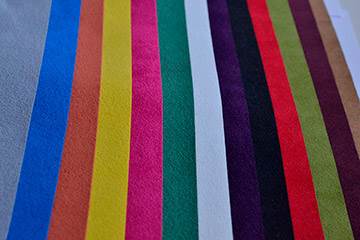
The material from which footbag is made. For professional 32
panel footbag I use synthetic thin suede. It is difficult to find it in Ukraine, you can buy it for
the border. In addition, some use synthetic car rags. I personally have not tried, not
I can say nothing.
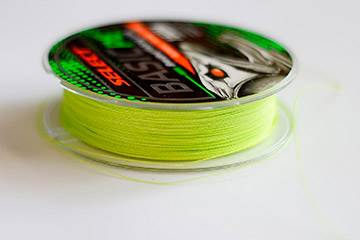
Threads used for stitching panels. I really like to sew
fishing cord with a diameter of 0.22-0.24 mm. This is a very reliable, woven from 4-8 cores thread. She is extreme
strong, not afraid of water, thick enough not to cut the fabric. In principle, you can use any
strong thread of sufficient thickness. Or fold the strong thread in half.
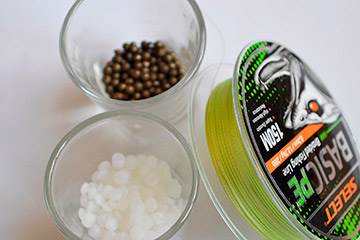
Than they stuff balls for freestyle footbag. In my balls,
I use only steel granules. They give an optimal filling volume of 50% by weight of 60 grams. Can
use balls for slingshots, or balls for pneumatics. In addition, balls are filled with sand,
lead shot, plastic granules in different ratios. I am opposed to such fillers.
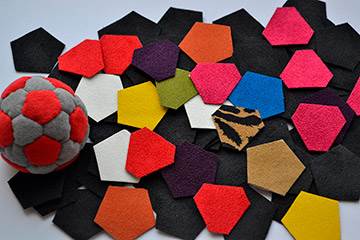
The first step is to cut out 32 panels for the future
products. These are 20 irregularly shaped hexagons and 12 pentagons (regular pentagons). Extremely
it is desirable that they be cut perfectly evenly. For this, tailor's scissors are needed. Some
masters pre-make a template and draw figures on the fabric, and then they cut it out.
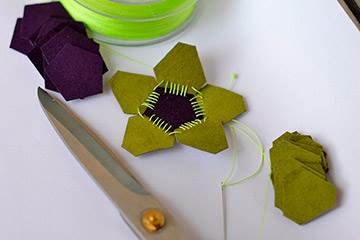
Let's start sewing. First you need to sew five 6-gons
to one pentagon. Do not tighten the knot, this will interfere. Need to do this later.
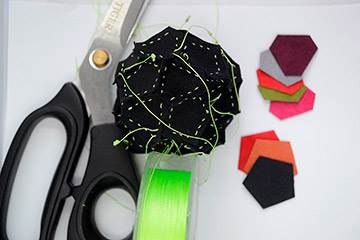
In the future, you need to sew the panels according to the following pattern.
Sew sequentially one pentagon and add the appropriate number of hexagons.
In order not to get confused, it is better to go according to the scheme.

When you sew the last pentagon, take the thread
more authentic. And leave the seams stretched. Later, this will turn the footbag out.
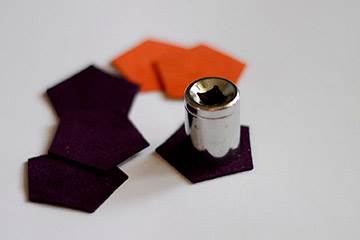
Take a suitable mandrel and place it in the center of the first
the pentagon. Tighten the thread around the mandrel and tie the knot. For reliability, it’s better to tie a few more knots and
saturate them with glue. Trim the ends. Repeat for all other pentagons except
last one.

With a pencil or pen, turn the footbag on the outside.
This can be done through the last, uncontrolled pentagon.
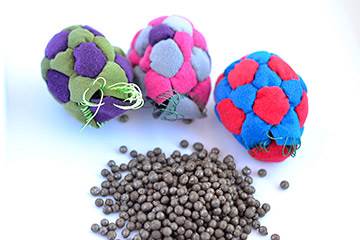
Make from paper, or pick a suitable funnel and fill it with
filler. Remember, the ideal ratio of 50% filling and 60 grams of weight. Tighten the last knot and
tuck it in. Everything, footbag is ready.
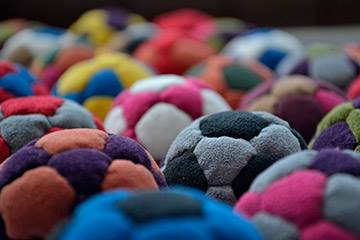
Try, experiment and everything will work out.
Buy footbag - tips
1. Most importantly, footbag must be made of thin and very durable material. It is best if it is made from synthetic suede with a thickness of 0.5-0.7 mm.
2. The material should be soft and velvety to the touch. This will allow footbag to stay on the surface better.
3. For freestyle, the degree of filling needs about 50%. This means that the ball should be half full. For no game, it is usually filled almost completely.
4. footbag must be in perfect shape and when in contact with the surface, it should not bounce, roll away and make unpredictable movements. The ball should have a minimal bounce.
5. Be sure to pay attention to the filler. Sand tends to crumble into dust. After that, the ball loses weight and your shoes and clothes will be dusted. Plastic granules may crumble and have a sharp edge. It can cut the threads inside. Metal balls are best.
6. When falling, the ball should crumple, but the spherical shape must be restored when it is thrown up.
7. It’s better to clarify if the ball can be washed. Over time, the material becomes dirty and unpleasant in tactile sensations. After washing, these imperfections should be corrected.
8. Give preference to a ball that is sewn with three stitches. This can be seen even in the photo. A slightly winding line should be visible between the panels.
9. If you plan to play at dusk, take a ball in which there are light colors. White, yellow, etc. It is very difficult to keep track of dark footbag in low light.
10. Ideal for soccer freestyle is considered the weight of 60-70 grams and a size of 4.5-5 cm in diameter. These are the most optimal characteristics.
11. It is best to take handmade soccer. Usually they are of much higher quality.
12. We do not recommend for purchase: footbag from thick material; weighing less than 50 grams; diameter less than 4.5 cm .; full of sand.
